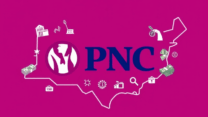
Adobe (ADBE): Creative King, ‘Massive Surge’ Alert? You’ll Regret Missing This!

stock market by its ticker symbol ADBE. When you think about creating
stunning visuals, editing photos, designing websites, or crafting engaging digital
content, Adobe’s software suite likely comes to mind. Products like
Photoshop, Illustrator, Premiere Pro, and Acrobat are industry standards,
used by creative professionals and businesses worldwide. But Adobe is more
than just creative tools; it’s also a major player in digital marketing and
customer experience solutions. Understanding this dual focus and its
subscription-based business model is key for anyone interested in ADBE
stock.
Adobe is a global software company that provides products and
services used by creative professionals, marketers, businesses, and
consumers. The company has undergone a significant transformation over the
past decade, successfully transitioning from selling perpetual software
licenses (where you buy the software once) to a subscription-based model
(where you pay a recurring fee to use the software, typically monthly or
annually). This shift to the cloud, primarily through its Creative Cloud and
Experience Cloud offerings, has fundamentally changed Adobe’s business and
financial profile, creating more predictable and recurring revenue
streams.
The software industry is characterized by rapid technological
advancements, evolving user needs, and intense competition. Factors like the
shift to cloud computing, the rise of mobile and web-based creative tools,
the increasing importance of digital marketing, and global economic
conditions all play a major role. Investing in a company like Adobe means
engaging with these dynamics and understanding how the company plans to
leverage its strong brand, innovative products, and sticky subscription model
to drive future growth and profitability. Let’s explore the different facets
of Adobe’s business and what they mean for
investors.
Understanding Adobe’s Core Business
Segments
Adobe operates through three primary cloud-based business
segments: Digital Media, Digital Experience, and Publishing and Advertising.
The Digital Media segment is the most well-known and includes the Creative
Cloud and Document Cloud. Creative Cloud provides access to Adobe’s suite of
creative software applications like Photoshop, Illustrator, InDesign,
Premiere Pro, After Effects, and many others, used by designers,
photographers, video editors, and other creative professionals. Document
Cloud includes Acrobat and other services for creating, editing, and managing
PDF documents. Revenue in this segment is primarily driven by recurring
subscription fees from individuals and organizations. The stickiness of these
creative tools, which are often essential for professional workflows,
contributes to high customer retention rates.
The Digital Experience segment provides a portfolio of solutions
for marketing, advertising, analytics, and commerce. This includes the Adobe
Experience Cloud, which helps businesses create, manage, and optimize
customer experiences across various channels, from websites and mobile apps
to email and social media. Products in this segment include Adobe Analytics,
Adobe Experience Manager, Adobe Marketo Engage, and Adobe Commerce. This
segment serves marketers and IT professionals within businesses, helping them
understand customer behavior, personalize interactions, and manage digital
campaigns. Revenue in this segment is also largely subscription-based, often
involving larger enterprise contracts. The growth in digital marketing and
the increasing focus on customer experience management are key drivers for
this segment.
The Publishing and Advertising segment is smaller and includes
legacy software products (like technical documentation software) and
advertising cloud technologies. While still contributing revenue, this
segment is less of a focus for future growth compared to Digital Media and
Digital Experience.
Understanding these segments helps illustrate how Adobe generates
revenue and its strategic focus. The successful transition to subscription
models in Digital Media and the growth of the Digital Experience segment are
key to Adobe’s modern business profile.
The Power of the Subscription Model and Cloud
Transition
Adobe’s transition to a subscription-based cloud model has been a
major success story and a key driver of its financial performance over the
past decade. Moving away from one-time software purchases to recurring
subscriptions created a more predictable and stable revenue stream. Instead
of relying on periodic major software releases to drive sales, Adobe now
benefits from consistent monthly or annual payments from its large and
growing subscriber base.
The cloud model also allows Adobe to deliver continuous updates
and new features to its software applications, providing more value to
subscribers over time and encouraging retention. It also helps combat
software piracy, as the software requires ongoing authentication through the
subscription. For users, the subscription model makes Adobe’s powerful
software more accessible, particularly for individuals and small businesses,
by lowering the initial cost barrier compared to expensive perpetual
licenses.
The high renewal rates for Creative Cloud subscriptions
demonstrate the stickiness of Adobe’s products and the value that creative
professionals place on having access to the latest versions of
industry-standard tools. This predictable, high-margin recurring revenue is a
major positive for investors and contributes to strong free cash flow
generation.
Financial Performance and Key Metrics
Adobe has demonstrated strong financial performance since its
transition to the cloud, characterized by consistent revenue growth,
expanding operating margins, and robust free cash flow generation. Key
financial metrics for investors include total revenue (broken down by
segment), Digital Media and Digital Experience Annualized Recurring Revenue (ARR),
gross margin, operating margin, net income, and earnings per share (EPS). ARR
is a particularly important metric for subscription businesses, representing
the predictable revenue that would be recognized over the next 12 months if
all existing subscriptions are renewed.
Profitability has improved as the subscription model has scaled,
providing higher margins compared to the old license model. Operating
expenses include significant investments in research and development
(R&D) to innovate its software and platforms, as well as sales and
marketing to acquire new subscribers and enterprise customers. Managing these
investments effectively while driving revenue growth is crucial for
maintaining profitability.
Free cash flow generation is a major strength for Adobe, supported
by its high-margin recurring revenue and efficient operations. This cash flow
provides significant flexibility for R&D investments, strategic
acquisitions, and returning capital to shareholders through share
buybacks.
Growth Drivers: Digital Transformation and
Innovation
Adobe’s growth is driven by several key factors. The increasing
global demand for digital content creation, fueled by the growth of social
media, e-commerce, digital marketing, and online video, drives demand for
Adobe’s Creative Cloud tools. As more businesses and individuals create
digital content, the need for powerful and easy-to-use creative software
increases.
The ongoing digital transformation of businesses worldwide is a
major driver for the Digital Experience segment. Companies are investing
heavily in understanding their customers, personalizing interactions, and
optimizing digital channels to deliver better customer experiences. Adobe’s
Experience Cloud provides the tools and platforms to enable these
initiatives, benefiting from the increasing importance of data-driven
marketing and customer relationship management.
Innovation is crucial for Adobe to maintain its leadership
position. This includes developing new features and capabilities within its
existing software (e.g., AI-powered tools in Photoshop), expanding into new
areas (like 3D design or augmented reality), and enhancing its cloud
platforms. Staying at the forefront of creative and digital experience
technology is essential for attracting new subscribers and retaining existing
ones.
Shareholder Returns: Buybacks and Potential
Dividends
Adobe has a history of returning value to its shareholders
primarily through share buybacks. By repurchasing its own shares on the open
market, the company reduces the number of outstanding shares, which can help
boost earnings per share and potentially increase the stock price over time.
Adobe has been a consistent and significant buyer of its own stock,
reflecting its confidence in the long-term value of the company and its
commitment to returning excess cash to
shareholders.
Unlike many mature technology companies, Adobe has not
historically paid a regular cash dividend. The company has prioritized
reinvesting its significant free cash flow back into the business for
R&D, strategic acquisitions, and share buybacks to drive future growth.
While the possibility of initiating a dividend in the future as the business
matures further is always present, for now, share buybacks are the primary
method of returning capital to shareholders.
Competition and Risks
Despite its strong market position, Adobe operates in a highly
competitive software market. In the Digital Media segment, it faces
competition from other software providers offering creative tools (like
Affinity, Corel, and various smaller players), as well as companies
developing web-based or mobile-first creative applications. The rise of
AI-powered content creation tools could also impact the market for
traditional creative software.
In the Digital Experience segment, Adobe competes with major
technology companies offering marketing clouds, analytics platforms, and
e-commerce solutions (like Salesforce, Oracle, SAP, Google, and various
specialized marketing technology vendors). The competition for enterprise
customers in this space is intense.
Risks for Adobe include potential changes in consumer or business
spending on software, particularly during economic downturns. Competition
could lead to pricing pressure or impact subscriber growth. Successfully
integrating acquisitions and developing new products that resonate with
customers are crucial for future growth, but execution risk is always
present. Cybersecurity threats and data privacy concerns are also important
considerations for a cloud-based software company. Furthermore, changes in
technology trends or the emergence of disruptive new platforms could pose a
challenge to Adobe’s established position.
Conclusion: A Cloud-Powered Software
Leader
In conclusion, Adobe Inc. (ADBE) is a leading software company
that has successfully transformed its business through a shift to cloud-based
subscription models. Its powerful Digital Media segment, with its
industry-standard creative tools, and its growing Digital Experience segment,
providing essential solutions for digital marketing and customer experience,
position it as a key player in the digital economy. The company benefits from
predictable recurring revenue, high margins, and strong free cash flow
generation, which it uses to invest in innovation and return capital through
share buybacks.
For investors seeking exposure to the software sector with a focus
on creative tools, digital marketing, and a strong subscription model,
understanding Adobe’s core business segments, its successful cloud
transition, its growth drivers (digital content creation, digital
transformation), and the competitive landscape is essential for evaluating
its potential as a long-term investment. Despite the inherent risks in the
technology sector and intense competition, Adobe’s established brand,
innovative products, and sticky subscription base make it a significant
company to consider.







